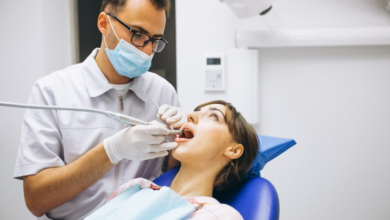Supporting LGBTQ+ Youth Mental Health in Schools and Communities

The journey through adolescence is complex for all young people, but for LGBTQ+ youth, it often comes with additional layers of challenge. Navigating identity, facing societal prejudice, and seeking acceptance can significantly impact mental well-being. Statistics consistently show that LGBTQ+ youth experience higher rates of mental health conditions like depression, anxiety, and suicidal ideation compared to their heterosexual and cisgender peers. Creating supportive environments in schools and communities is not just beneficial; it’s a critical imperative for fostering resilience and ensuring these young people thrive. This article explores actionable strategies to build such environments, highlighting the profound impact they can have on mental health outcomes.
Understanding the Unique Mental Health Challenges Faced by LGBTQ+ Youth
The disparities in mental health outcomes for LGBTQ+ youth are stark and well-documented. Research from The Trevor Project consistently reveals that a significant percentage of LGBTQ+ young people seriously consider suicide, with higher rates among transgender and non-binary youth. These challenges are often rooted in experiences of discrimination, rejection from family or peers, bullying, and the stress of concealing one’s identity. The lack of safe spaces and understanding adults can exacerbate feelings of isolation and hopelessness.
Beyond direct discrimination, the constant pressure to conform or the fear of being “outed” can lead to chronic stress, impacting academic performance, social development, and overall psychological health. Moreover, some LGBTQ+ youth may face unique barriers in accessing mental health services, including a lack of culturally competent providers or fear of judgment. These systemic and interpersonal stressors underscore the urgent need for comprehensive support systems.
The Pivotal Role of Schools in Fostering Inclusivity
Schools are often the primary social environment for young people outside of their homes. As such, they play a crucial role in either perpetuating or alleviating the mental health challenges faced by LGBTQ+ youth.
Implementing Inclusive Policies and Practices
Formal policies that protect LGBTQ+ students from discrimination and bullying are foundational. These include anti-bullying policies that specifically mention sexual orientation and gender identity, as well as policies that support gender-affirming practices like using preferred names and pronouns. Creating gender-neutral bathrooms and establishing GSA (Gay-Straight Alliance) clubs are also vital steps. GSAs provide safe spaces for students to connect, find support, and advocate for change within their school community.
Training for Educators and Staff
Many educators may lack adequate training on LGBTQ+ issues. Comprehensive professional development can equip teachers, counselors, and administrators with the knowledge and skills to create inclusive classrooms, recognize signs of distress in LGBTQ+ students, and respond appropriately to bullying or discrimination. This training should cover topics such as understanding gender identity and sexual orientation, using inclusive language, and identifying resources for support. When school staff are knowledgeable and affirming, students feel safer and more supported, which can significantly reduce stress and improve mental health.
Inclusive Curriculum and Resources
Integrating LGBTQ+ history, literature, and perspectives into the curriculum can help normalize LGBTQ+ identities and foster a sense of belonging among students. Providing access to accurate and affirming resources, both within the school library and through partnerships with community organizations, ensures that LGBTQ+ youth and their allies have the information they need.
See also: Walk In Clinics Arlington TX: Your Go-To for Affordable Preventive Healthcare
Building Supportive Communities Beyond School Walls
While schools are vital, the broader community also has a significant role to play in supporting LGBTQ+ youth mental health.
Establishing Youth-Focused Community Centers and Programs
Community centers that specifically cater to LGBTQ+ youth can offer invaluable safe spaces, social activities, and support groups. These centers often provide mentorship programs, life skills workshops, and opportunities for civic engagement, helping young people build confidence and a sense of community. Such spaces can be lifelines for youth who may not find acceptance at home or in school.
Promoting Family Acceptance and Support
Family rejection is a major predictor of negative mental health outcomes for LGBTQ+ youth. Community initiatives can focus on educating parents and families about LGBTQ+ identities, offering support groups for parents, and providing resources to help families navigate their child’s coming out journey. Programs that foster family acceptance can dramatically improve a young person’s mental well-being and reduce their risk of homelessness, substance abuse, and suicide.
Access to Affirming Mental Health Services
Ensuring that LGBTQ+ youth have access to culturally competent mental health professionals is paramount. This means training therapists and counselors on the specific needs of this population, understanding identity development, and addressing the impact of minority stress. For youth struggling with severe mental health challenges, or those who might be at risk of substance use disorders, including the need for opioid addiction treatment, having access to specialized and affirming care is critical. Community health centers can play a vital role in connecting youth to these essential services, including comprehensive programs that integrate mental health support with effective opioid addiction treatment strategies.
Addressing Substance Use and Addiction
Unfortunately, LGBTQ+ youth are at a higher risk for substance use, often as a coping mechanism for stress, discrimination, and trauma. Communities must be proactive in offering preventative programs and accessible treatment options. This includes providing affirming and non-judgmental spaces where youth can seek help for substance use issues. When addressing serious concerns like addiction, comprehensive services that include mental health support and effective opioid addiction treatment are absolutely essential. Early intervention and culturally sensitive care can make a profound difference in preventing long-term struggles.
Conclusion: A Collective Responsibility for a Brighter Future
Supporting the mental health of LGBTQ+ youth is a collective responsibility that extends from individual families to entire communities and school systems. By implementing inclusive policies, providing comprehensive training, fostering affirming environments, and ensuring access to specialized mental health services, including those for opioid addiction treatment when needed, we can create a world where all young people feel safe, valued, and empowered to thrive. The mental well-being of LGBTQ+ youth is not just an LGBTQ+ issue; it is a human issue, and investing in their health and happiness strengthens the fabric of our society as a whole.





